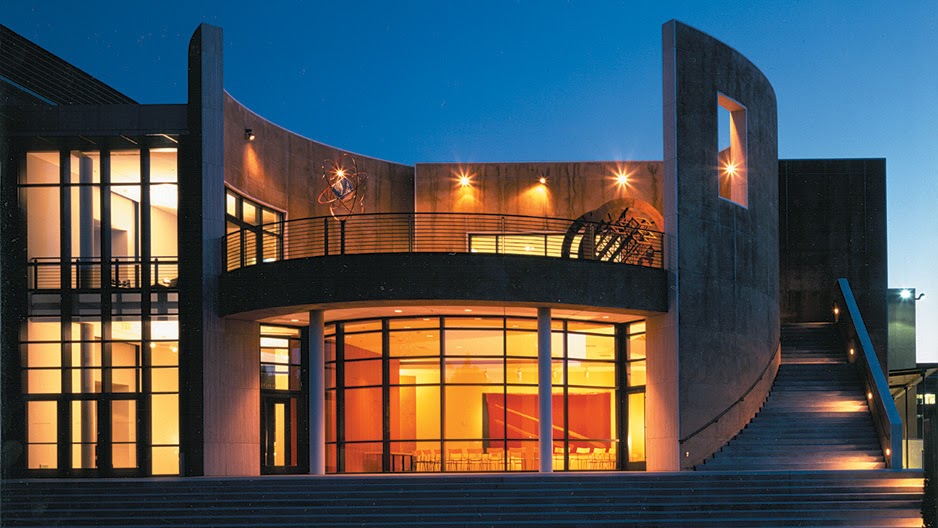The Iris & B. Gerald Cantor Center for Visual Arts at Stanford University, formerly the Stanford University Museum of Art, and commonly known as the Cantor Arts Center, is an art museum on the campus of Stanford University in Stanford, California. The museum, which opened in 1894, consists of over 130,000 square feet of space, including sculpture gardens. The Cantor Center houses one of the largest collections of Auguste Rodin sculptures, with 199 works by Rodin, most in bronze but also other media; many sculptures are on display in the B. Gerald Cantor Rodin Sculpture Garden.
History
The Leland Stanford Jr. Museum opened in 1894, one of the few founded by a private family with a general art collection. By 1905 the museum would be known for its collection of Asian art. The 1906 San Francisco earthquake would level two wings of the building; destroying the Roman, Egyptian and Asian galleries. Three-quarters of the building were damaged beyond repair. The earthquake, coupled with the death of co-founder Jane Stanford, affected the museum's budget. The museum failed to have its own endowment outside of the University, and faculty and administration failed to express interest in saving the museum to focus on academic concerns post-earthquake. The building would fall into heavy disrepair and curatorial duties would eventually stop.
Eventually the museum's space would be used by natural science departments, before eventually closing in 1945. The museum's collection was inventoried and works of less interest and "aesthetic merit" were deaccessioned. While many works of less interest were released, a number of the original works from the Stanford family collection were deaccessioned due to the aesthetic taste of the 1950s. In May 1951, 2,000 visitors were welcomed into the museum for a two-day trial visit. This allowed the museum to examine its role within the community in order to help it decide if it should re-open due to community interest. In 1953 the Committee for Art at Stanford was founded, with intentions of raising funds and developing members to re-open the museum. The museum would work for the next 24 years to expand and conserve its collection, develop programming, educational services and publications.
In 1985, professor Albert Elsen worked with art collector B. Gerald Cantor, and other donors, to open the B. Gerald Cantor Rodin Sculpture Garden. The museum would again be victim to another earthquake, the Loma Prieta. Severe damage caused the museum to close in 1989. Stanford hired Thomas K. Seligman in 1991 to direct the rebuilding of the museum. Seligman would lead in redefining the museum as an arts center, stress the institution's opportunity to educate Stanford's students, school children and the wider public.
The museum reopened in 1999 as the Iris & Gerald Cantor Center for the Visual Arts and in July 2005 the museum had its one millionth visitor.
Stanford University Museum Video
Architecture
Renovations and re-opening
After being heavily damaged by the Loma Prieta earthquake in 1989, the building underwent major renovations and construction before reopening as the Cantor Center for Visual Arts. The Center was designed by the architectural firm Ennead Architects. The project cost $36.8 million, which included a complete seismic upgrade of the entire 78,000 square foot historical building and the new 42,000 square foot wing. The Rodin Sculpture Garden was improved, and new gardens were also installed for contemporary works. The addition of the new wing added an additional 12,000 square feet of exhibition space for the modern and contemporary collections. Contemporary architecture is blended with the original 1891 building, with a full-length glass wall, which looks over the courtyard between the new and old buildings.
Collection
The Cantor Center Visual Arts collection is encyclopedic in nature, covering antiquity, ethnographic art, modern, contemporary and more. The center houses over 500 works of African art, with a focus on figurative from Sub-Saharan Africa. About 70 works of this collection are on exhibit. The Center's Oceanic and Indonesian collections consist of over 450 objects and textiles, including works from the Batak. Native American art collections focus mainly on California, Southwest and Northwestern works. Basketry and cultural objects from the Yurok, Karuk, and Hupa peoples, as collected by John Daggett are on display, and are from the original museum collection. About 200 works from Mesoamerica are also on display, including terracotta works from West Mexico and ancient ceramics from the Mimbres, the Anasazi and Casas Grandes.
The Center has the largest collection of Auguste Rodin works outside of the Musee Rodin in Paris. The collection, purchased by B. Gerald Cantor, includes over 400 works.
In 2011, the University announced the donation of 121 paintings and sculptures from Harry W. and Mary Margaret Anderson, and their daughter, Mary Patricia Anderson Pence, of Atherton, California. The collection, mostly of post-WW2 American art, includes Jackson Pollock's Lucifer as well as works from Mark Rothko, Ad Reinhardt and Willem de Kooning. A gallery devoted to the collection opened in 2014 as a separate museum named the Anderson Collection which is located next to the Iris & B. Gerald Cantor Center for Visual Arts building on the Stanford University campus.
Further reading
- Elsen, Albert E. and Rosalyn Frankel Jamison. Rodin's Art: The Rodin Collection of Iris & B. Gerald Cantor Center of Visual Arts at Stanford University. Oxford: Oxford University Press (2003). ISBN 0-19-513381-1
Are You Looking for Products
Here some products related to "Iris & B. Gerald Cantor Center For Visual Arts".
Amazon.com Art: Anima #5 ..
The Arts of India, Southe..
EMERGENCY: Alfredo Jaar: ..
Amazon.com Art: 'Denmoza'..
Get these at Amazon.com* amzn.to is official short URL for Amazon.com, provided by Bitly
Source of the article : here


EmoticonEmoticon